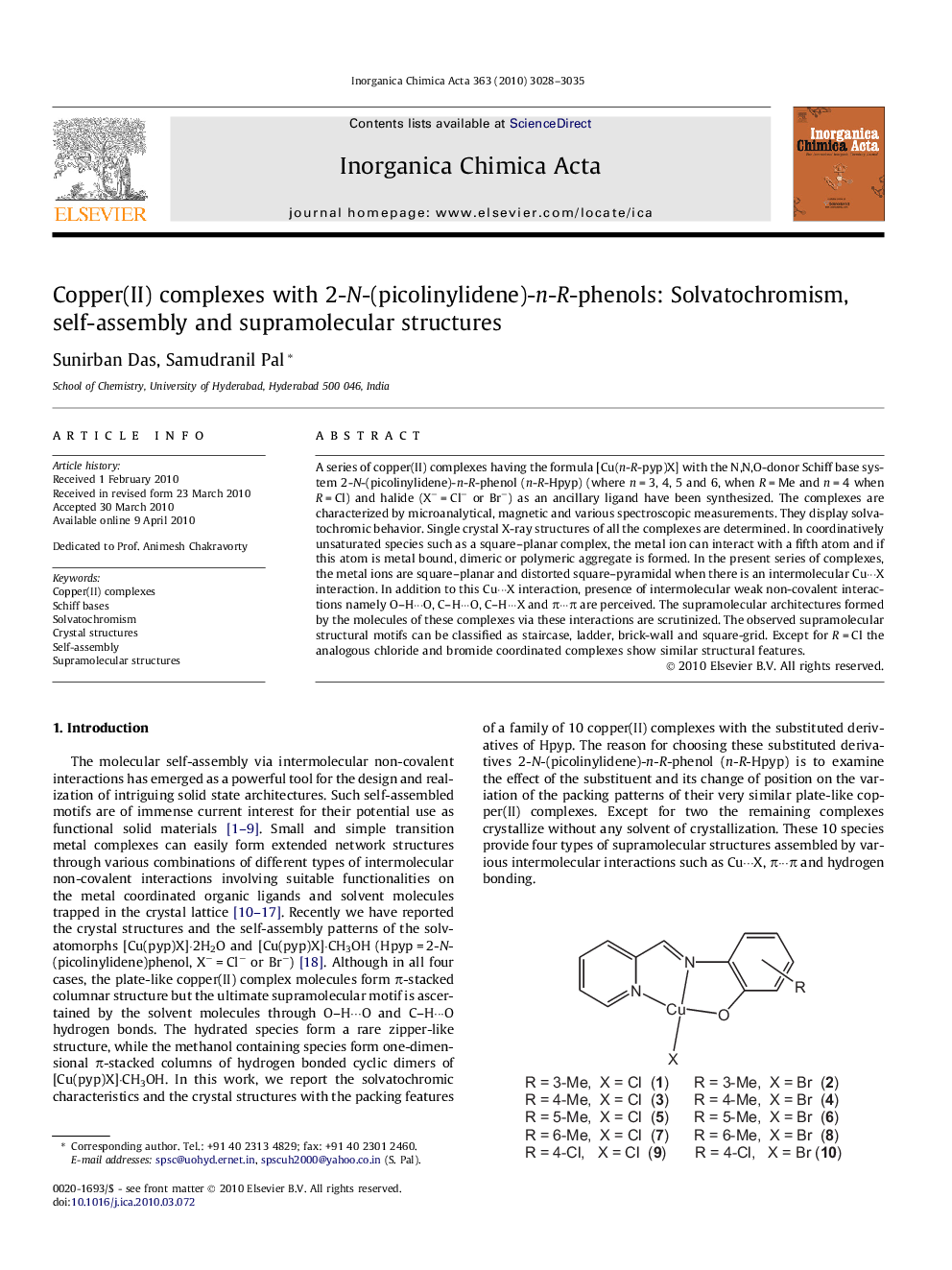| Article ID | Journal | Published Year | Pages | File Type |
|---|---|---|---|---|
| 1306919 | Inorganica Chimica Acta | 2010 | 8 Pages |
A series of copper(II) complexes having the formula [Cu(n-R-pyp)X] with the N,N,O-donor Schiff base system 2-N-(picolinylidene)-n-R-phenol (n-R-Hpyp) (where n = 3, 4, 5 and 6, when R = Me and n = 4 when R = Cl) and halide (X− = Cl− or Br−) as an ancillary ligand have been synthesized. The complexes are characterized by microanalytical, magnetic and various spectroscopic measurements. They display solvatochromic behavior. Single crystal X-ray structures of all the complexes are determined. In coordinatively unsaturated species such as a square–planar complex, the metal ion can interact with a fifth atom and if this atom is metal bound, dimeric or polymeric aggregate is formed. In the present series of complexes, the metal ions are square–planar and distorted square–pyramidal when there is an intermolecular Cu···X interaction. In addition to this Cu···X interaction, presence of intermolecular weak non-covalent interactions namely O–H···O, C–H···O, C–H···X and π···π are perceived. The supramolecular architectures formed by the molecules of these complexes via these interactions are scrutinized. The observed supramolecular structural motifs can be classified as staircase, ladder, brick-wall and square-grid. Except for R = Cl the analogous chloride and bromide coordinated complexes show similar structural features.
Graphical abstractA family of square–planar copper(II) complexes [Cu(n-R-pyp)X] (X− = Cl− or Br−) with 2-N-(picolinylidene)-n-R-phenol (n-R-Hpyp; n = 3, 4, 5 and 6 for R = Me and n = 4 for R = Cl) is reported. The complexes are solvatochromic. Variation of supramolecular structures with the change of substituent position on the ligand backbone is described.Figure optionsDownload full-size imageDownload as PowerPoint slide
